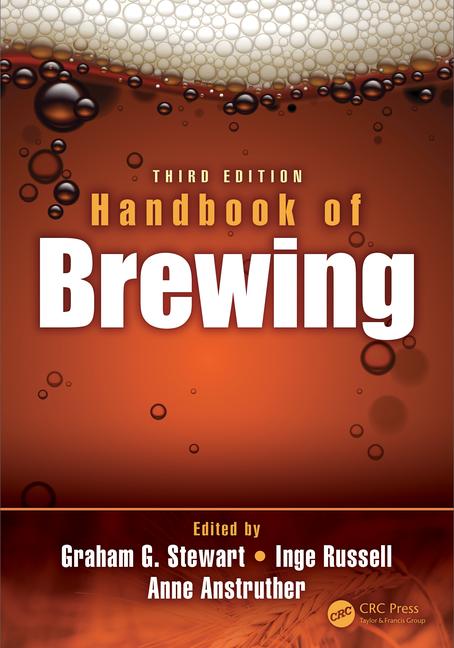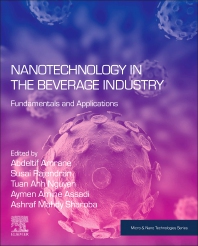Ingredient Spotlight
Masking solutions meet sugar reduction challenges head-on
Beverage-makers turn to natural ingredients, flavor modifiers to improve on taste

Image courtesy of Chobani
Iconic singer, jazz pianist and actor Nat King Cole recorded more than a 100 songs that became hits on the pop charts. Cole, whose career as a pop vocalist started in the late 1930s and spanned almost three decades, is quoted for having said: “You’ve got to change with the public’s taste.”
Today, to meet consumers’ changing preferences for functional beverages and lower sugar content, experts note that beverage-makers are turning to solutions using advanced high-intensity sweeteners, flavor modifiers and maskers to deliver on functionality without compromising taste.
“Consumers increasingly look for beverages infused with functional ingredients, which has sparked a new wave of product innovation,” says Smaro Kokkinidou, PhD, principal food scientist at Cargill, Wayzata, Minn.
However, depending on the application, many ingredients central to functional beverages impact flavor, Kokkinidou explains.
“Products that promote physical and mental health and wellness are trending, but while functional ingredients like vitamins, minerals and antioxidants may deliver physical benefits, and adaptogens like caffeine, l-theanine or botanicals like chamomile and ashwagandha may address mental well-being, they often present formulation hurdles,” she says. ”Associated challenges, including bitterness, astringency, earthy and chalky attributes, and metallic notes can negatively impact consumers’ sensory experience.
“To compensate, product developers have historically relied on generous amounts of sugar in their formulations. That’s a turn-off for many of today’s consumers, a reality that has beverage-makers embracing other solutions,” Kokkinidou continues. “Advanced high-intensity sweeteners are often part of this toolbox, along with flavor modifiers and maskers.”
Abbie Hohman, business development manager for North America at Westchester, Ill.-based Ingredion Inc., echoes similar sentiments, noting that, although consumers want the benefits of functional beverages, these “better-for-you products” often have some taste nuances that aren’t appealing.
“According to several proprietary Ingredion studies, consumers are unwilling to sacrifice taste,” Hohman says. “By using natural ingredients, such as masking ingredients or flavors with modifying properties, we can help beverage manufacturers create products that have functional benefits and taste good.
“The increase in demand to make functional, ‘better-for-you’ products more palatable has emphasized the research, development, and utilization of natural ingredients such as maskers or flavors with modifying properties,” she continues.
Solutions for no, low-sugar formulations
As sugar reduction is on the rise within the industry, experts point out that choosing the right sweetener solution is an important part of creating beverages without sacrificing taste.
“Consumers want reduced, no added or no sugar products, adding more complexity to flavor formulation,” Cargill’s Kokkinidou says. “While high-intensity sweeteners can potentially match the intensity of sugar, they come with their own challenges, including negative off-flavors and different sweetness dynamics such as delayed sweetness onset as well as sweetness linger. Choosing the right sweetener or sweetener blend is an important first step to great-tasting products, but they may need additional help, depending on the application.
“At a minimum, most high-intensity sweeteners will need ingredients to help with body and mouthfeel,” Kokkinidou continues. “Whenever grams of sugars are replaced with parts-per-millions of high-intensity sweeteners, formulators will need ingredients that can help bring back the missing mouthfeel and body. That’s important because mouthfeel has a great impact on sensory perception, including how flavors are expressed.”
Additionally, as high-intensity sweeteners have different sweetness profiles, Kokkinidou points to some having a slower sweetness onset and more sweetness linger, while others might have a faster sweetness onset and more rapid sweetness drop off.
“To compensate, formulators often use flavor modifiers to create a sweetness profile closer to that of sucrose,” she explains. “Further, some high-intensity sweeteners bring along negative off notes, too. They may have lingering bitterness, astringency or other off flavors — especially when used in higher concentrations to achieve deep sugar reduction. In these situations, formulators may turn to flavor modifiers to help enhance characterizing flavor properties or minimize off flavors from other ingredients in the system.
“Cargill’s newest sweetener system, EverSweet + ClearFlo, brings both components together, combining our premier stevia sweetener with a natural flavor,” Kokkinidou continues. “The resulting sweetener system offers wide-ranging benefits that include a sugar-like sweetness, flavor modification that results in reduced negative off-flavors imparted by functional ingredients and enhanced mouthfeel, along with improved solubility and stability in formulations, and faster dissolution.”
Ingredion’s Hohman points to using natural ingredients that emulate the sweetness of sugar to increase the perception of sweetness.
“One of the main challenges of reducing sugar is matching the temporal sweetness of sucrose. Alternate sweeteners can lack the upfront sweetness and or the similar sweet linger of real sugar,” she explains. “By using natural ingredients, such as maskers or flavors with modifying properties, we can increase the perception of sweetness and reduce unwanted aftertaste often associated with reduced, low, or no sugar products.”
Addressing plant-based, clean label trends
Aside from sugar reduction, plant-based and clean label trends also have implications for masking ingredients.
“While the flavor profiles of many botanical proteins have come a long way in a short time, they remain prone to earthy, beany and grassy notes — off tastes that become more apparent as inclusion levels rise,” Cargill’s Kokkinidou explains. “Proteins also tend to mute flavors, so when formulating a high protein beverage, it can be a struggle to get flavors to ‘pop.’ Adding more characterizing flavor is one option, but the costs can quickly add up and can lead to ‘flavor burn,’ an unbalanced profile with distinct ‘chemical’ or artificial aftertaste.”
When it comes to clean-label trends’ impact on beverage formulations, Kokkinidou suggests that this could mean that customers might need to move away from artificial high-intensity sweeteners.
“Every sweetener has its own sweetness profile and temporal dynamics, so these kinds of formulation changes often require masking ingredients,” she says.
A further extension of the clean-label movement is consumers’ growing interest in sustainability.
“Increasingly, it’s not enough that consumers perceive ingredients as ‘clean for the body,’ they also expect them to be ‘clean for the planet,’” Kokkinidou explains. “Developing products that fully embrace this emerging trend can require reformulation, and depending on the ingredient adjustments, it may also require masking ingredients.”
Choosing the right solution
As beverage-makers have a large toolbox of flavor modifiers, sweeteners and natural ingredients to choose from, experts highlight various factors to take into account when choosing a masking solution.
“It’s important that developers understand all the complexities associated with flavor modification,” Cargill’s Kokkinidou says. “Introducing a flavor modifier with masking properties often impacts a multitude of sensory properties. For example, while it may mute off-notes, flavor maskers also often dull the system’s characterizing flavors. Other times, flavor maskers may introduce additional flavors that are not congruent with the flavor profile of the finished product.
“The key is finding masking solutions that can provide a neutral beverage profile and work in harmony with — or even enhance — the finished products’ planned flavor profiles,” she continues.
Ingredion’s Hohman echoes similar sentiments, noting that beverage-makers should consider all ingredients in a formula, as each contributes to the overall taste experience.
“Understanding and defining the desired flavor profile and the ingredients that may need masking is also essential,” she says. “Also, consider how flavors might change when using flavors with modifying properties. It is a complex art and science as manufacturers experiment with different masking solutions.”
Other considerations include recognizing the full cost-in-use of masking solutions.
“Flavor maskers often mute characterizing flavors, which may then require an increase in expensive characterizing flavors to compensate,” Cargill’s Kokkinidou explains. “Masking ingredients can also have a great impact on sweetener systems, influencing how they express the positive and negative attributes of their flavor profiles.
“Given these complexities, it’s important to select a partner who understands the nuances of flavor masking and who can help brands optimize their approach,” she continues.
Solution for the future
With innovations and improvements to masking ingredients and functional solutions, experts highlight what today’s solutions offer compared with those of the past.
“There have been huge improvements in this field, as we’ve gained a deeper understanding of how different sensory inputs interact,” Cargill’s Kokkinidou says. “As a result of these advances, Cargill offers a range of flavors with modifying properties, which when coupled with optimized sweetener systems, can provide great flavor masking and enhancing properties.”
Ingredion’s Hohman concludes that compared with past solutions, today’s more unique tools allow developers to choose the solution that best fits their target customers and consumers.
“Additionally, the emphasis on the research, development and utilization of natural ingredients, such as maskers or flavors with modifying properties, has yielded a balance of targeted yet holistic approaches to improving taste,” Hohman explains. “All ingredients in the formula influence the overall taste experience.
“We can look at synergies between other ingredients and maskers or flavors with modifying properties for optimal taste when developing food and beverage products,” she continues.
Looking for a reprint of this article?
From high-res PDFs to custom plaques, order your copy today!










